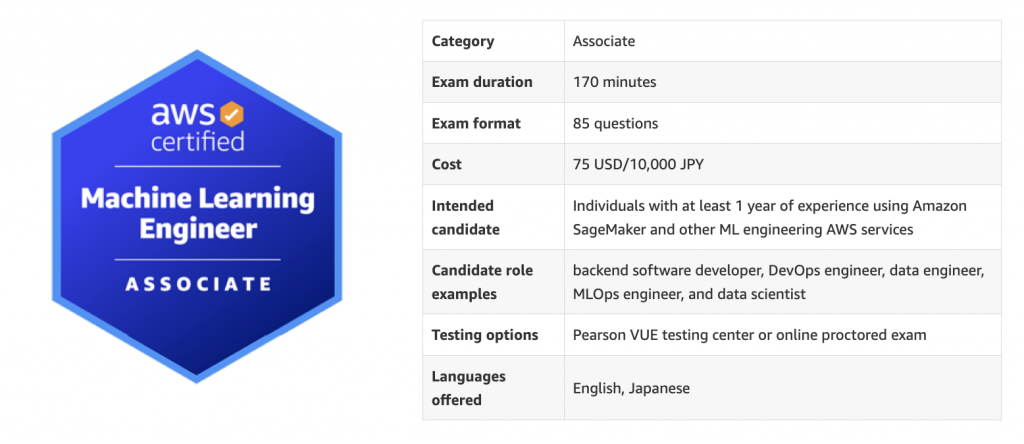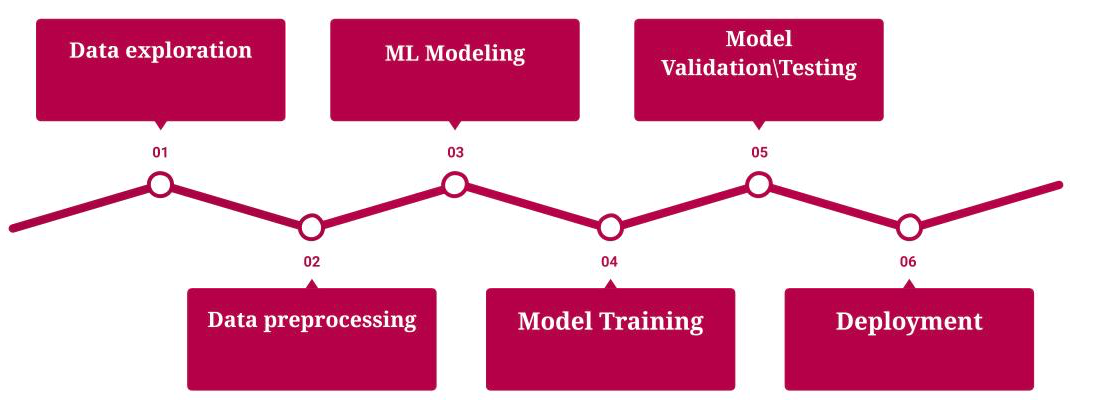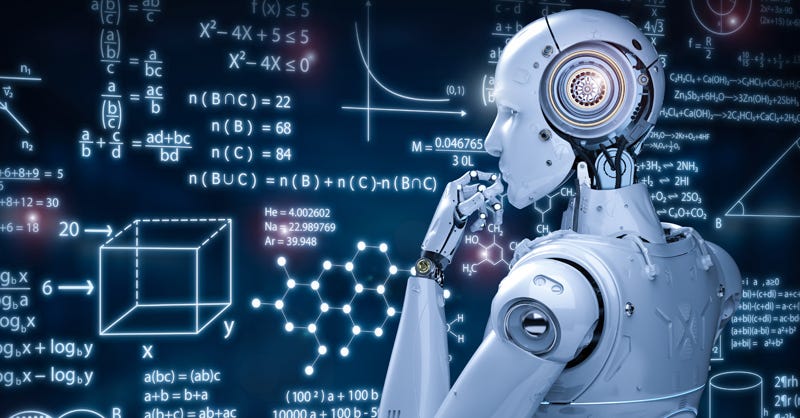All Categories
Featured
Table of Contents
- – 7 Simple Techniques For 7-step Guide To Become...
- – Should I Learn Data Science As A Software Engi...
- – Getting The Practical Deep Learning For Coder...
- – 5 Easy Facts About Machine Learning In Produc...
- – All About Machine Learning Devops Engineer
- – Machine Learning Engineer Learning Path Fund...
- – Generative Ai Training - Questions
Some people think that that's unfaithful. Well, that's my whole occupation. If someone else did it, I'm mosting likely to utilize what that person did. The lesson is placing that aside. I'm requiring myself to analyze the feasible remedies. It's even more about taking in the content and attempting to use those concepts and less about locating a library that does the job or finding someone else that coded it.
Dig a little bit deeper in the mathematics at the beginning, simply so I can build that foundation. Santiago: Ultimately, lesson number seven. I do not believe that you have to comprehend the nuts and bolts of every formula before you utilize it.
I have actually been making use of neural networks for the lengthiest time. I do have a sense of just how the slope descent works. I can not discuss it to you today. I would need to go and examine back to in fact get a much better instinct. That does not suggest that I can not resolve points utilizing neural networks? (29:05) Santiago: Trying to force people to believe "Well, you're not going to achieve success unless you can discuss each and every single detail of just how this functions." It returns to our sorting instance I believe that's simply bullshit recommendations.
As a designer, I have actually worked with lots of, numerous systems and I have actually made use of numerous, lots of things that I do not understand the nuts and bolts of how it works, despite the fact that I understand the effect that they have. That's the last lesson on that particular thread. Alexey: The amusing point is when I believe concerning all these collections like Scikit-Learn the formulas they use inside to apply, for instance, logistic regression or something else, are not the like the algorithms we study in artificial intelligence classes.
7 Simple Techniques For 7-step Guide To Become A Machine Learning Engineer In ...
So also if we tried to learn to obtain all these basics of artificial intelligence, at the end, the formulas that these collections utilize are various. ? (30:22) Santiago: Yeah, absolutely. I assume we require a lot much more pragmatism in the market. Make a whole lot even more of an influence. Or concentrating on supplying value and a bit much less of purism.

Incidentally, there are two different courses. I generally speak with those that wish to work in the sector that intend to have their effect there. There is a course for scientists and that is completely different. I do not attempt to mention that since I don't recognize.
Right there outside, in the sector, pragmatism goes a long way for certain. (32:13) Alexey: We had a comment that said "Feels even more like inspirational speech than chatting regarding transitioning." Possibly we ought to switch over. (32:40) Santiago: There you go, yeah. (32:48) Alexey: It is a great motivational speech.
Should I Learn Data Science As A Software Engineer? Can Be Fun For Anyone
One of the points I intended to ask you. I am taking a note to speak about ending up being better at coding. Initially, allow's cover a pair of things. (32:50) Alexey: Allow's start with core tools and structures that you require to find out to really shift. Allow's claim I am a software application engineer.
I understand Java. I understand SQL. I recognize exactly how to make use of Git. I know Bash. Possibly I know Docker. All these points. And I become aware of equipment learning, it appears like a great point. What are the core tools and structures? Yes, I saw this video and I obtain persuaded that I do not require to obtain deep right into mathematics.
What are the core devices and structures that I need to discover to do this? (33:10) Santiago: Yeah, absolutely. Wonderful inquiry. I believe, top, you need to start finding out a little bit of Python. Considering that you already recognize Java, I do not think it's mosting likely to be a massive change for you.
Not because Python is the exact same as Java, however in a week, you're gon na obtain a great deal of the differences there. You're gon na be able to make some progression. That's top. (33:47) Santiago: After that you obtain specific core tools that are going to be utilized throughout your entire profession.
Getting The Practical Deep Learning For Coders - Fast.ai To Work
You get SciKit Learn for the collection of machine discovering formulas. Those are devices that you're going to have to be making use of. I do not suggest just going and finding out concerning them out of the blue.
Take one of those programs that are going to begin introducing you to some troubles and to some core ideas of machine discovering. I don't bear in mind the name, however if you go to Kaggle, they have tutorials there for cost-free.
What's excellent about it is that the only need for you is to understand Python. They're mosting likely to provide a trouble and inform you exactly how to make use of decision trees to address that details problem. I think that procedure is extremely powerful, due to the fact that you go from no equipment finding out history, to recognizing what the issue is and why you can not solve it with what you recognize now, which is straight software engineering practices.
5 Easy Facts About Machine Learning In Production Described
On the various other hand, ML designers concentrate on structure and deploying device understanding designs. They concentrate on training models with data to make predictions or automate jobs. While there is overlap, AI engineers deal with even more diverse AI applications, while ML designers have a narrower concentrate on artificial intelligence algorithms and their functional application.

Equipment understanding engineers focus on establishing and deploying machine learning models right into manufacturing systems. On the other hand, information scientists have a wider duty that consists of information collection, cleaning, expedition, and structure models.
As companies progressively adopt AI and device knowing technologies, the need for proficient experts grows. Machine discovering engineers work on innovative jobs, add to technology, and have affordable incomes.
ML is fundamentally different from standard software program growth as it concentrates on mentor computer systems to pick up from information, instead than programming explicit regulations that are implemented methodically. Unpredictability of results: You are probably used to writing code with predictable outcomes, whether your function runs when or a thousand times. In ML, nevertheless, the results are less particular.

Pre-training and fine-tuning: How these designs are trained on vast datasets and afterwards fine-tuned for certain jobs. Applications of LLMs: Such as text generation, belief evaluation and info search and retrieval. Documents like "Interest is All You Need" by Vaswani et al., which presented transformers. On the internet tutorials and training courses concentrating on NLP and transformers, such as the Hugging Face training course on transformers.
All About Machine Learning Devops Engineer
The capacity to manage codebases, combine changes, and solve disputes is equally as vital in ML development as it remains in conventional software application projects. The abilities created in debugging and testing software applications are highly transferable. While the context could change from debugging application logic to recognizing issues in information processing or design training the underlying principles of methodical investigation, hypothesis screening, and iterative refinement coincide.
Artificial intelligence, at its core, is heavily dependent on statistics and possibility theory. These are vital for recognizing exactly how algorithms gain from information, make predictions, and examine their efficiency. You must consider ending up being comfortable with ideas like analytical significance, circulations, hypothesis screening, and Bayesian thinking in order to design and translate models effectively.
For those curious about LLMs, an extensive understanding of deep understanding designs is beneficial. This includes not just the mechanics of neural networks but additionally the style of certain versions for various usage cases, like CNNs (Convolutional Neural Networks) for image processing and RNNs (Recurrent Neural Networks) and transformers for consecutive information and natural language handling.
You ought to be aware of these concerns and learn strategies for identifying, reducing, and connecting about predisposition in ML models. This consists of the potential effect of automated decisions and the ethical ramifications. Lots of designs, especially LLMs, require considerable computational sources that are frequently supplied by cloud systems like AWS, Google Cloud, and Azure.
Building these abilities will not just assist in a successful change right into ML yet likewise make sure that programmers can add efficiently and sensibly to the improvement of this dynamic field. Concept is crucial, yet absolutely nothing defeats hands-on experience. Beginning dealing with tasks that permit you to apply what you have actually learned in a practical context.
Join competitors: Sign up with systems like Kaggle to take part in NLP competitions. Build your tasks: Start with basic applications, such as a chatbot or a message summarization device, and progressively boost complexity. The field of ML and LLMs is rapidly advancing, with new breakthroughs and innovations emerging frequently. Remaining upgraded with the current study and trends is critical.
Machine Learning Engineer Learning Path Fundamentals Explained
Join communities and discussion forums, such as Reddit's r/MachineLearning or community Slack channels, to review ideas and get advice. Participate in workshops, meetups, and meetings to get in touch with other experts in the field. Contribute to open-source tasks or compose blog messages concerning your knowing journey and projects. As you acquire competence, start searching for opportunities to integrate ML and LLMs into your job, or look for brand-new functions concentrated on these innovations.

Vectors, matrices, and their function in ML formulas. Terms like version, dataset, features, tags, training, reasoning, and recognition. Information collection, preprocessing methods, version training, evaluation processes, and release considerations.
Choice Trees and Random Woodlands: User-friendly and interpretable models. Matching problem kinds with suitable models. Feedforward Networks, Convolutional Neural Networks (CNNs), Recurring Neural Networks (RNNs).
Continual Integration/Continuous Release (CI/CD) for ML process. Version surveillance, versioning, and efficiency monitoring. Identifying and dealing with adjustments in design efficiency over time.
Generative Ai Training - Questions

Course OverviewMachine discovering is the future for the next generation of software program professionals. This course works as an overview to device discovering for software engineers. You'll be presented to 3 of one of the most pertinent components of the AI/ML self-control; managed learning, neural networks, and deep learning. You'll understand the differences between conventional programs and equipment learning by hands-on growth in supervised understanding before developing out intricate distributed applications with semantic networks.
This training course acts as an overview to equipment lear ... Show Extra.
Table of Contents
- – 7 Simple Techniques For 7-step Guide To Become...
- – Should I Learn Data Science As A Software Engi...
- – Getting The Practical Deep Learning For Coder...
- – 5 Easy Facts About Machine Learning In Produc...
- – All About Machine Learning Devops Engineer
- – Machine Learning Engineer Learning Path Fund...
- – Generative Ai Training - Questions
Latest Posts
Software Developer Career Guide – From Interview Prep To Job Offers
The Google Software Engineer Interview Process – A Complete Breakdown
Mastering The Software Engineering Interview – Tips From Faang Recruiters
More
Latest Posts
Software Developer Career Guide – From Interview Prep To Job Offers
The Google Software Engineer Interview Process – A Complete Breakdown
Mastering The Software Engineering Interview – Tips From Faang Recruiters